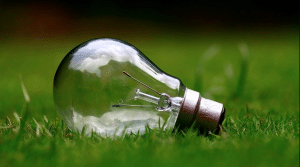Tips For Making Your Business Self Sustaining In Eco Friendly Ways

Turning a business from something that generates carbon by the hour into a self-sustaining, environmentally friendly unit is nothing to sneeze at. It takes a lot of time and effort, but to ensure you have a future in the working world, it’s essential to put
plans like these
in place. And to help out with that, we’ve collected together some of the best tips for becoming self-reliant for your convenience below. Keep them in mind if your business goal this year can only be completed by environmentally conscious objectives.
Cut Out Break Room Waste
Having plastic cutlery in the break room can go a long way to polluting the environment around you; they’re hard to break down at the garbage tip, and they’re easily forgotten at the bottom of a trash can as well. And let’s not forget about non-reusable water bottles and other vending machine items here; the break room can be the worst waste producer in your entire setup! But you can cut back on the trash that comes out of this room by promoting a simple policy of bringing forks, bottles, and cups from home.
Design Your Warehouse for Longevity
All businesses need somewhere to store their stock, overflow, and equipment, and yours is no different! However, you can make a difference by designing your warehouse to be made of more durable materials, just like these steel buliding frames . The longer a warehouse can go without needing maintenance or repairs, the lower its impact on the environment. Less manpower is needed, meaning fewer resources are consumed, and fewer carbon emissions are released into the atmosphere. So, if you’re currently in the midst of upgrading or moving your storage area, think about the longevity of the building in question.
Use Eco Cleaning Teams
An eco-cleaning team will go a long way to reducing your carbon footprint. Eco-conscious products, reduced waste, and the ability to compost anything they do throw away are keys to shortening your carbon cycle. The office will sparkle like never before, and you can rest easy knowing your workplace is clean and sanitized. Organic cleaning products are even a lot gentler on typical office surfaces – you won’t need to spend as much on the furniture budget this year-round!
Work with Green Vendors
You’re going to need suppliers and external teams with the same ethos as you on your side. Working with ‘green’ vendors goes a long way; it helps you to reduce your environmental impact across the board, in both direct and indirect ways. And so many businesses forget about how their actions can snowball, so you’ll have a one-up on most other companies in your area. Whether you’ve got an event to put on or you need to boost your supply chain, always look for that eco-friendly promise before you sign a contract.
Being a self-sustaining business is something to be proud of. Use tips like those above to get the eco wheel turning in your area.


